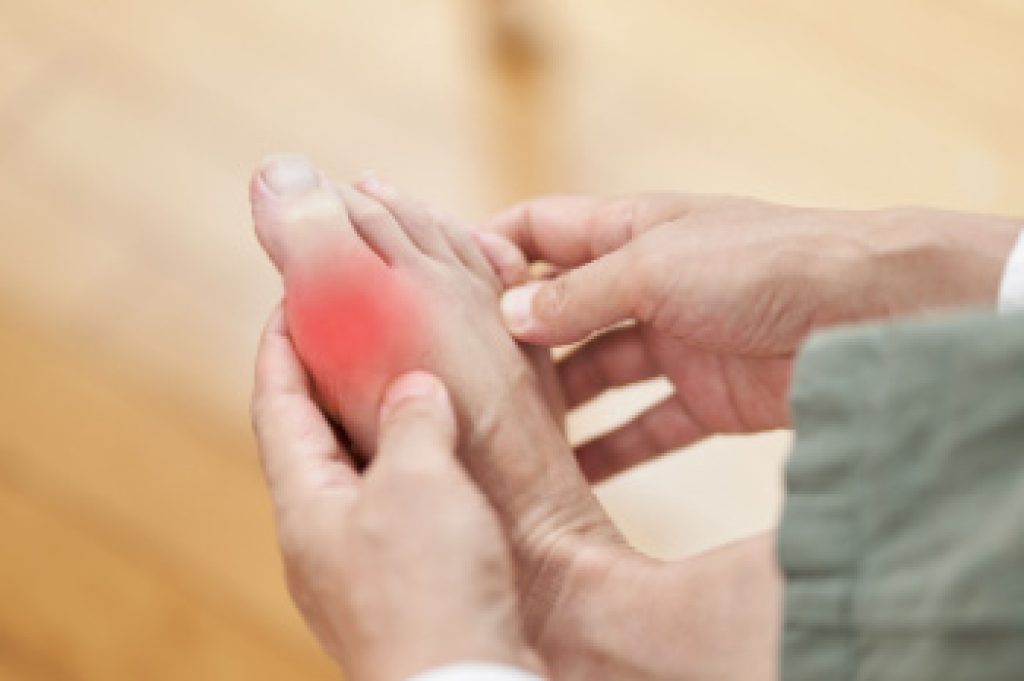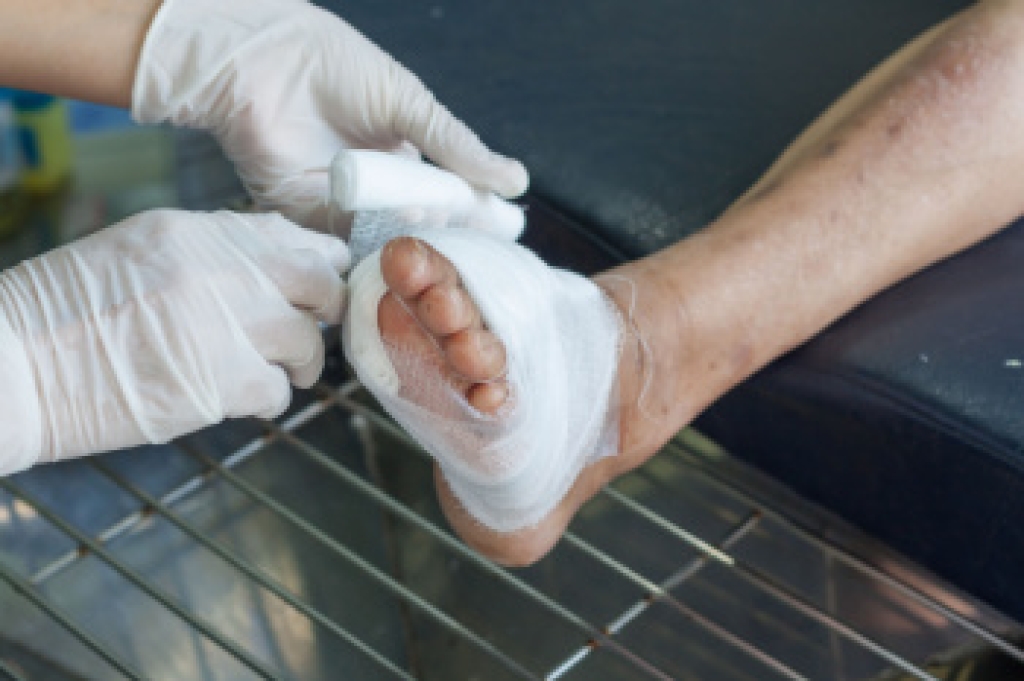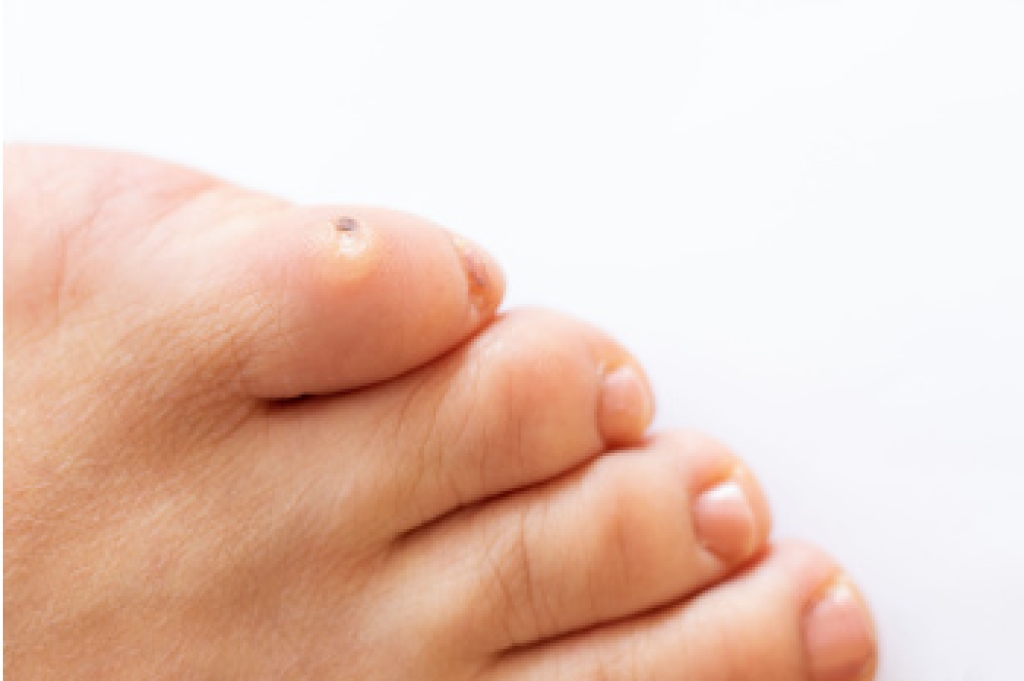
Gout is a painful condition that frequently affects the feet, especially the big toe joint, where sharp uric acid crystals can form and irritate the joint. This buildup leads to sudden flares of intense pain, swelling, redness, and warmth that make standing or walking very difficult. Flares can last for days or weeks and tend to return over time, sometimes spreading to the ankle or other joints in the foot. If untreated, repeated attacks can cause lasting damage and lead to the formation of tophi, which are hard lumps under the skin that restrict movement and deform the joint. Risk factors that raise the chance of developing gout include obesity, use of diuretics, diets high in red meat, shellfish, or sugary drinks, in addition to chronic conditions like high blood pressure, diabetes, or poor kidney function. A podiatrist can diagnose gout in the feet and provide treatment to reduce pain and protect joint health. If you have symptoms of gout, it is suggested that you schedule an appointment with a podiatrist for effective relief and prevention tips.
Gout is a foot condition that requires certain treatment and care. If you are seeking treatment, contact Kent DiNucci, DPM from Ankle and Foot Clinic . Our doctor will treat your foot and ankle needs.
What Is Gout?
Gout is a type of arthritis caused by a buildup of uric acid in the bloodstream. It often develops in the foot, especially the big toe area, although it can manifest in other parts of the body as well. Gout can make walking and standing very painful and is especially common in diabetics and the obese.
People typically get gout because of a poor diet. Genetic predisposition is also a factor. The children of parents who have had gout frequently have a chance of developing it themselves.
Gout can easily be identified by redness and inflammation of the big toe and the surrounding areas of the foot. Other symptoms include extreme fatigue, joint pain, and running high fevers. Sometimes corticosteroid drugs can be prescribed to treat gout, but the best way to combat this disease is to get more exercise and eat a better diet.
If you have any questions, please feel free to contact our office located in Omaha, NE . We offer the newest diagnostic and treatment technologies for all your foot care needs.




